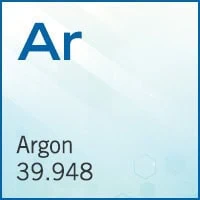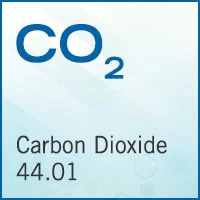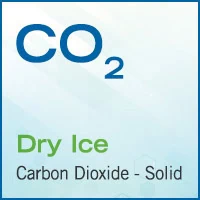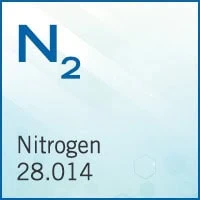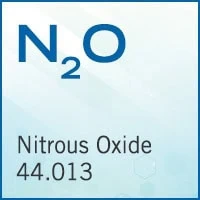Pure Gases
A component of the air we breathe, the atmospheric gases we supply include pure Argon (Ar), Carbon Dioxide (CO2), Helium (He), Nitrogen (N2), Nitrous Oxide (N2O) and Oxygen (O2).
Argon (Ar)
Argon is a colorless, odorless, non-reactive, inert gas. As argon is an atmospheric gas (0.93% vol.), it is generally obtained by separating air. Apart from being used in the welding industry, it is used as a carrier gas for biomedical purposes such as in chromatography. It provides a blanket atmosphere in pharmaceutical packaging and when mixed with fluorine and helium, it is used in excimer lasers for eye surgery.
Available in a variety of specialty gas grades up to 99.9999% pure.
Argon Compressed Gas SDS ~ Argon Liquid SDS
Carbon Dioxide (CO2)
Carbon dioxide is a colorless, odorless gas produced by normal respiration and from burning carbon and organic compounds. It is naturally present in air (about 0.03 percent) and is absorbed by plants in photosynthesis. It can be obtained from natural CO2 springs, limestone kilns, fermentation processes and gas streams from chemical, petrochemical and power plants.
Carbon dioxide has many well-known applications in the food and beverage industries – from carbonating drinks and preserving wine to modifying atmospheres for packaged foods. It is also an effective greenhouse growing agent, fire suppressant and chromatography gas. It is also used in controlling pH levels in water.
Available in USP, NF and industrial grades and in a variety of specialty gas grades up to 99.9995% pure.
Carbon Dioxide Compressed Gas SDS ~ Carbon Dioxide Liquid SDS
Carbon Dioxide, Solid or Dry Ice (CO2)
Dry ice is solid carbon dioxide (CO2) with a low temperature of -78° Celsius (-109° Fahrenheit). Carbon dioxide is part of the air we breathe and is recovered as a natural byproduct of processes such as fermentation. It is commonly used for storage and transportation of temperature sensitive products such as frozen/chilled foods or medical/pharmaceutical materials. Dry ice is used as a process coolant in food, biotechnology and pharmaceutical industries and is also an extremely effective and environmentally sound cleaning agent.
More information on Dry Ice >
Helium (He)
Helium (He) is a colorless, odorless, non-toxic, non-corrosive and non-combustible gas. It is mainly sourced from natural gas wells. This valuable gas is in short supply in the world, which is why many applications incorporate recovery and recycling systems.
With the lowest boiling point of any gas (4.2 Kelvin or –269° Celsius), liquid helium is the coldest matter on Earth. This makes it ideal as a cryogenic agent for a number of cutting-edge medical and physics applications. For instance, it is used to cool superconductive magnetic coils in magnetic resonance imaging (MRI) and nuclear magnetic resonance (NMR) medical equipment. Helium combined with nitrogen and oxygen creates a breathing gas mixture suitable for divers. The non-flammable, low-density properties of helium make it suitable for inflating balloons at parties and special events.
Available in USP, NF and industrial grades.
Helium Compressed Gas SDS ~ Helium Liquid SDS
Nitrogen (N2)
Nitrogen (N2) makes up the major portion of the earth’s atmosphere, accounting for 78.08% of total volume. It is a colorless, odorless, tasteless, non-toxic and almost totally inert gas. It can be an asphyxiant in high concentrations. Nitrogen is produced at air separation plants. A second purification process may be necessary if very high purity levels are required.
Nitrogen is used for blanketing in food processing and for modified atmosphere packaging (MAP) of foods. In liquid form, it is an agent to shock-freeze food, store biological material and perform cryosurgery. It is also useful as a carrier, zero and balancing gas in laboratory analysis.
Available in NF and industrial grades.
Nitrogen Compressed Gas SDS ~ Nitrogen Liquid SDS
Nitrous Oxide (N2O)
Nitrous Oxide (N2O) is typically an inert, stable and non-flammable gas. It is colorless with a slight metallic scent and taste. At elevated temperatures, nitrous oxide is a powerful oxidizer similar to molecular oxygen.
Nitrous oxide occurs in small amounts in the atmosphere, but nitrous oxide for commercial use is produced in specialized plants by heating ammonium nitrate to 250° Celsius, followed by a purification process.
Nitrous oxide has significant medical uses, especially in surgery and dentistry, for its anesthetic and pain reducing effects. The gas is also approved for use as an aerosol spray propellant for whipped cream and cooking sprays and as an inert gas used to displace oxygen in order to inhibit bacterial growth when filling of packages of potato chips and similar snack foods.
Available in a variety of purities and concentrations.
Nitrous Oxide Compressed Gas SDS ~ Nitrous Oxide Liquid SDS
Oxygen (O2)
Oxygen (O2) is a colorless and odorless gas. It is essential for most forms of life on Earth. We absorb oxygen through the air we breathe. Medical oxygen is vital in hospital and clinical care for resuscitation and surgery and for various therapies.
Oxygen is obtained through the liquefaction and distillation of ambient air at air separation plants. A second purification process may be necessary if ultra-high purity levels are required.
The main industrial application of oxygen is combustion. Many materials that do not normally burn in air will burn in oxygen so mixing oxygen with air greatly enhances combustion efficiency. High-purity oxygen is used in laboratories, process-control operations and metal analysis instruments.
Used for water treatment, oxygen is an effective way of purifying waste water and treating sewage. Other applications include sealing glass ampoules in the pharmaceutical industry, oxygenation of water for aquaculture and modified atmosphere packaging (MAP) mixtures.
Available in a variety of purities and concentrations in USP, NF and industrial grades.
Oxygen Compressed Gas SDS ~ Oxygen Liquid SDS
Contact a CryoCarb™ Gas Specialist (888) 254-5931 to discuss your unique application
Supply Modes
CryoCarb™ supplies gas products in compressed gas cylinders of varying sizes that can operate at very high pressures and in lower pressure cryogenic microbulk and bulk liquid storage tanks.
Since gases are used in a wide range of applications, the appropriate storage mode varies. Pressure, volume and flow rate are all key factors in determining the most appropriate and cost effective gas supply mode.
Compressed gas cylinders have a limited volume of gas present but are easy to move to where they are required.
Many gases, liquefied at low temperature can be supplied either in small cryogenic vessels or in large tanks capable of holding ten’s of thousands of gallons of liquid gas. For customers requiring even larger quantities of gases, we offer customized on-site solutions.
FaB Wisconsin
We are a proud member of FaB Wisconsin, the state’s vibrant food and beverage industry cluster organization. FaB has over 200 members with a focus on food, beverage, ingredient, equipment and packaging makers.

